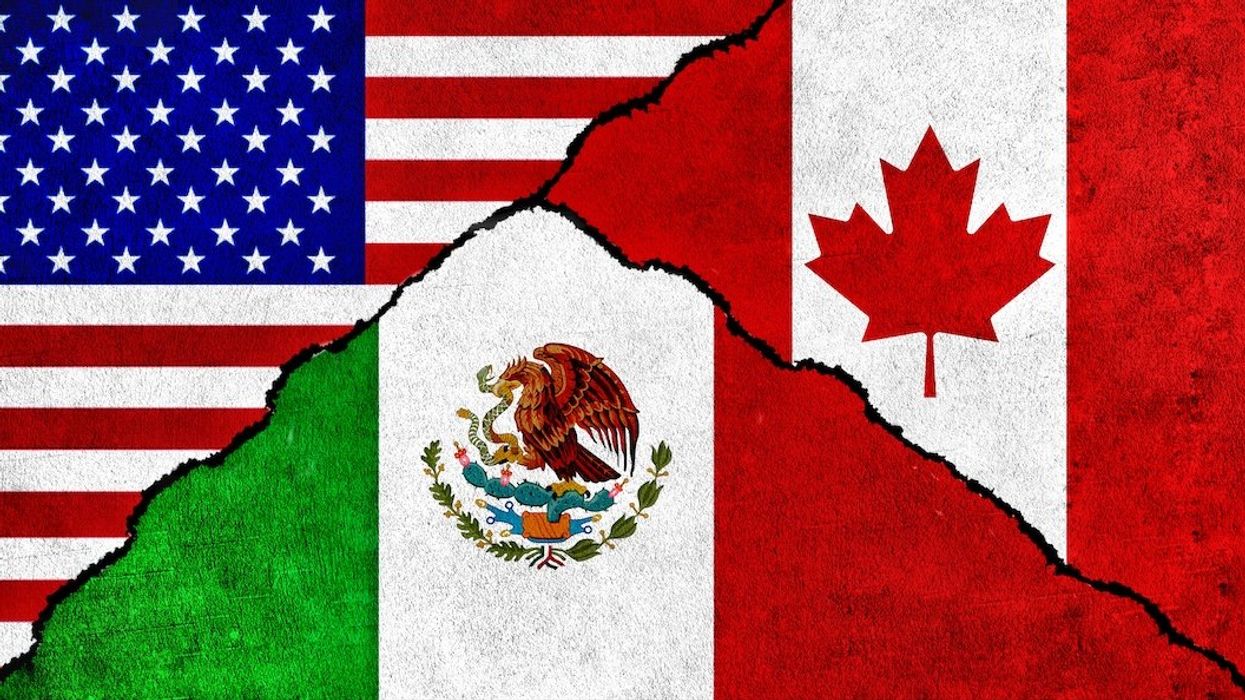Todd Gaziano is the executive director of the Pacific Legal Foundation’s D.C. Center. Reed Hopper is a principal attorney with PLF and represented John Rapanos in the Supreme Court case of Rapanos v. United States.
–
In a matter of weeks, the U.S. Environmental Protection Agency and Army Corps of Engineers will impose a profoundly unconstitutional regulation on America that vastly exceeds the scope and intrusiveness of most laws enacted by Congress.
The EPA and Corps “Waters of the United States” rule illustrates the need for fundamental reform of the authority and procedures for issuing such agency “laws.” But until then, Congress and the courts must do more to stop these individual threats to our liberty.
As we have explained elsewhere, the draft WOTUS rule would regulate virtually any wet—or occasionally wet—spot in the country, including ditches, drains, seasonal puddle-like depressions, intermittent streams, ponds, impoundments, prairie potholes, and large “buffer areas” of land adjacent to every waterway. Unsurprisingly, this power was not conferred in so many words by Congress.
 (Tom Benitez/Orlando Sentinel)
(Tom Benitez/Orlando Sentinel)
Here is how the WOTUS rule evolved from a run-of-the-mill agency power grab to the breathtaking federal tool to control property throughout the nation.
First, agency bureaucrats are never “neutral” in how they interpret the scope of their own powers. Public choice theory shows that they will assume power whenever the opportunity arises, which is almost always at the expense of individual liberty.
Since authority under the Clean Water Act to regulate the discharge of pollutants into “navigable waterways” was somewhat vague, agency bureaucrats began early on to misread what was a “navigable waterway” and in increasingly expansive ways. It’s what zealous and energetic bureaucrats do whenever citizens can’t fire them, but EPA and the Corps may have been given an even freer hand by their nominal minders because they were pursuing environmental ends that Congress didn’t otherwise reach.
Second, although the Clean Water Act was inspired by pollution that ignited a river, agency bureaucrats eventually decided to use it to prohibit the placement of clean sand and gravel on building sites, and to use the prohibition on discharging any such “pollutants” as the principal tool to regulate wetlands across America. Wetlands are productive environmental areas, but it was still abusive to use provisions of the CWA relating to the discharge of “pollutants” into “navigable waterways” to construct a nation-wide wetlands conservation program.
Third, every single abuse in stretching the meaning of “navigable waterways” and “pollutants” served as a precedent to stretch those terms further. Unless something dramatic changes, this cascade of abuses will continue until the last vestige of personal freedom is gone. EPA and the Corps are more zealous and certain in their judgments than most agencies, but it is the nature of all unaccountable bureaucracies to continually push the limits of their power.
Four, ordinary Supreme Court rulings rejecting the agencies’ extreme interpretations of the CWA have made no apparent difference. In SWANCC v. Army Corps of Engineers (2001), the Court forbade the Corps from regulating “isolated water bodies” that were not connected to traditional navigable waters.
In Rapanos v. United States (2006), Pacific Legal Foundation challenged the agencies’ jurisdictional reach again. The Court ruled that federal agencies could not regulate wetlands merely because they have a hydrological connection to downstream navigable waters. Nevertheless, the agencies now seek to regulate isolated water bodies and any “other water” with a hydrological connection to traditional navigable waters, plus an indeterminate amount of land in which water may sometimes collect or flow.
With characteristic chutzpa, the agencies assert that this immense new power grab is only a “clarification” that will not expand their jurisdiction and is necessary to comply with the Rapanos ruling. None of that is true.
Fifth, it is also clear from their testimony at a joint House-Senate hearing on the rule in January that the agency heads don’t care (or don’t care enough) that the current Congress is opposed to their regulation.
In response to intense grilling from committee leaders and backbenchers alike, the agency heads admitted that some further “clarification” in the draft rule was in order. Yet they refused to slow down the rulemaking process or publish a revised draft rule for additional public comment. The rush to issue a new rule has never been explained.
Thus, the House Transportation Committee recently reported out a bill that would freeze the process until further consultations with states and other interested parties takes place, but don’t expect the agencies to pay any attention to the mere will of Congress unless it becomes law, for example, if it is attached to some measure that President Barack Obama must sign or similar language is contained in an appropriations law.
Six, apologists for unconstitutional administrative action have argued that democratic control exists, just indirectly, since executive branch agencies care deeply how their regulatory programs are viewed in Congress. That’s almost as funny as the teacher in “The Christmas Story” who asserts that whoever caused Flick to place his tongue on the frozen flagpole will suffer personal guilt “far worse than any punishment” she could impose.
In any event, this indirect accountability theory flips the protection for individual liberty in the Constitution on its head. The steps to enact new legislation were intentionally made difficult in the Constitution. That Congress has to overrule illegal agency “law” fundamentally subverts a constitutional order based on the consent of the governed.
Seventh, EPA and the Corps also oppose all efforts by landowners to challenge individual jurisdictional determinations in court. After winning a 9-0 decision in Sackett v. EPA in 2012, Pacific Legal Foundation continues to battle the agencies on court access to challenge wetlands determinations in analogues situations.
The Foundation is asking the Supreme Court to take up this issue again in a case pending now before the High Court, but Congress should expressly provide for judicial review of all final agency wetlands determinations—without a landowner having to apply for a permit on bended knee to use his own property that may not be lawfully subject to any agency control.
Pacific Legal Foundation and others will file suit challenging the WOTUS rule if it is not substantially changed to make it lawful, but Congress should not wait years for another Supreme Court ruling that EPA and the Corps may again ignore. If Congress cannot find the will to stop the WOTUS rule, it will be further proof that Congress is no match for an entrenched bureaucracy set on controlling how we live.
–
TheBlaze contributor channel supports an open discourse on a range of views. The opinions expressed in this channel are solely those of each individual author.


 (Tom Benitez/Orlando Sentinel)
(Tom Benitez/Orlando Sentinel)


